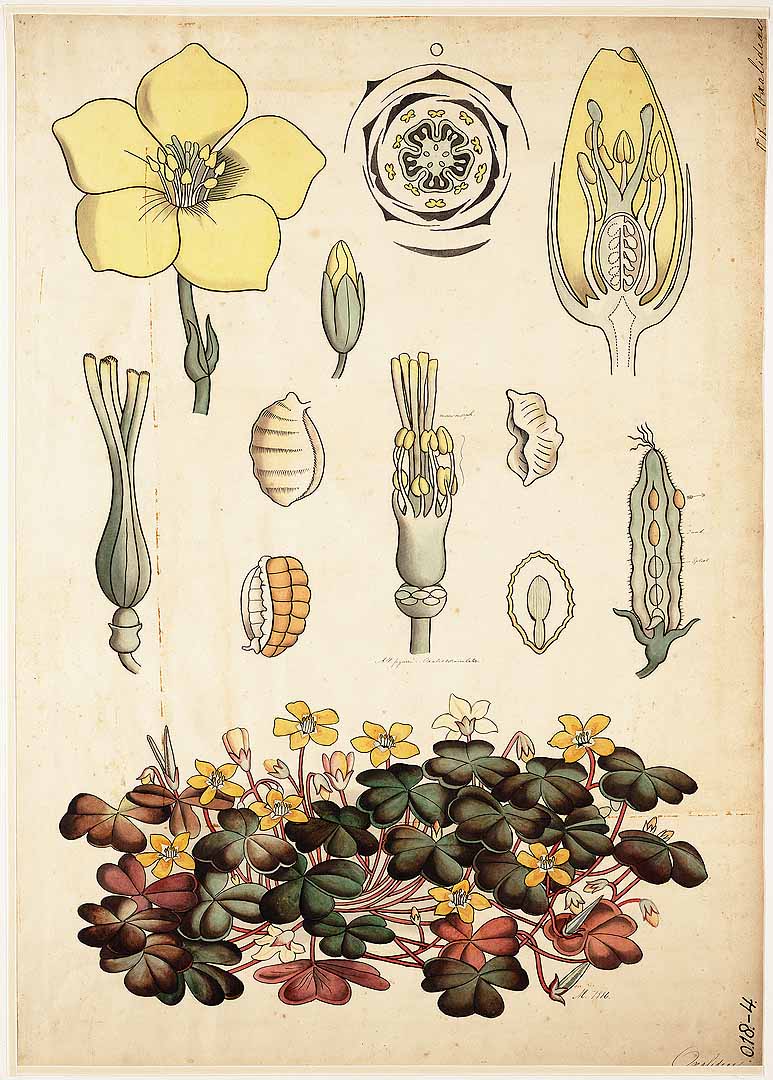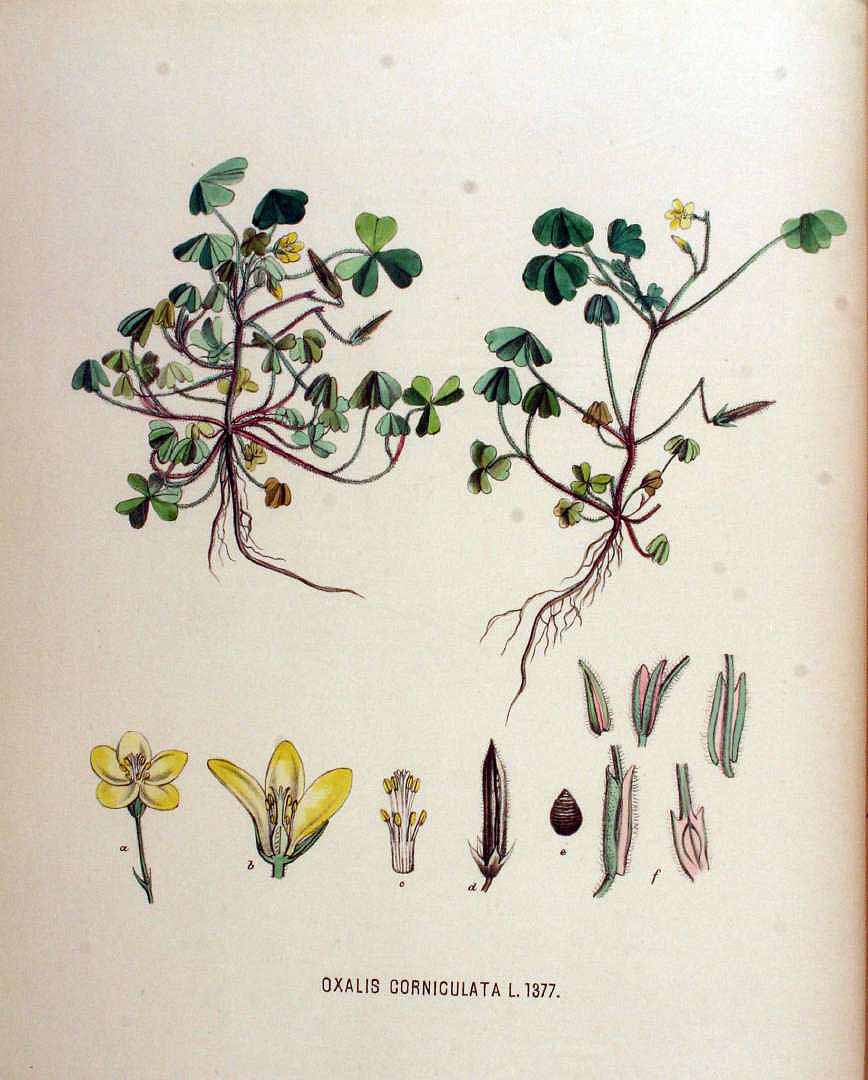! Nouveau site ici !
Vita > Plantae > Magnoliophyta > Magnoliopsida > Geraniales >
Oxalidaceae > Oxalis
Oxalis corniculata
(Oxalide corniculée)




 | ** - **
| ** - **
Vita > Plantae > Magnoliophyta > Magnoliopsida > Geraniales >
Oxalidaceae > Oxalis
Oxalis corniculata
(Oxalide corniculée)

Une petite herbe. Il se trouve sur le sol. Le système racinaire est mince. Plusieurs tiges poussent et celles-ci se trouvent généralement le long du sol. Ceux-ci peuvent former des racines aux nœuds. Il pou... (traduction automatique)
→suite
⬀
Le  donne accès au menu
donne accès au menu (c'est votre point de repère) 😊 ;
En dessous vous avez la classification, à partir de la vie (Vita, premier rang) jusqu'à la classe au dessus de la plante, dont vous trouvez ensuite le nom scientifique/botanique (latin) puis le nom commun (français), le cas échéant ;
C'est aussi un lien vers la fiche complète (tout comme la ✖, en bas à droite, et le +, en dessous de la description) ;
Vient alors l'illustration (ou ce qui la remplace, en attendant), la comestibilité :
Et en bas
⬂





